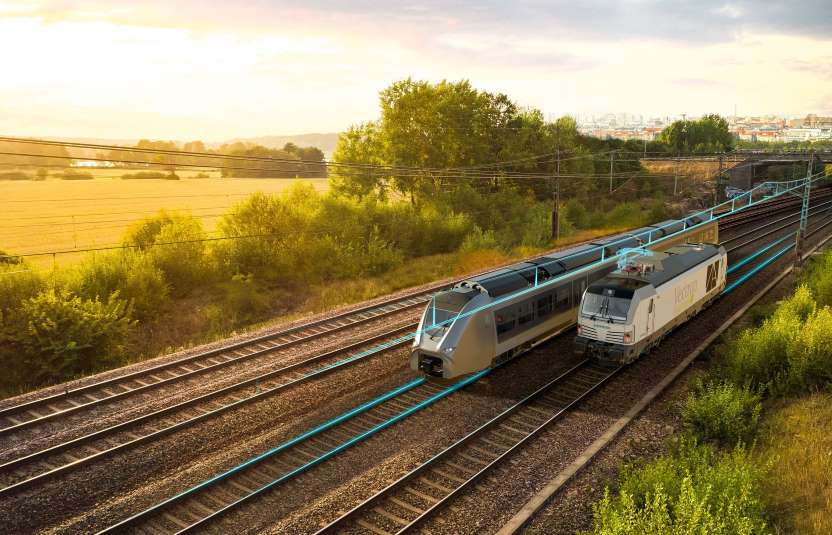Sunday August 11, 2024
Reading time: 3 minutes

ChinaChina Railway Co., Ltd., known for its advancements in rail technology, has reached a major milestone by testing a super-high-speed (UHS) magnetic levitation train capable of reaching speeds of up to 621 mph. The test, conducted in Yanggao County, Datong City, Shanxi Province, marks a major step forward in China’s ongoing efforts to maintain its global leadership in high-speed rail systems. The new train, which uses magnetic levitation technology in a low-vacuum tube, has the potential to transform the way people travel in China and around the world.
The technology behind the speed
Developed through a collaboration between China Aerospace Science and Industry Corporation Limited and Shanxi Province, the UHS maglev train uses cutting-edge technology that lifts the train above its rails using magnetic forces, eliminating friction. The train operates in a low-pressure environment, reducing air resistance and allowing it to reach speeds more than twice that of the Shanghai Maglev, currently the world's fastest operational train with a top speed of 286 mph.
Successful tests and main conclusions
In the recent demonstration, the magnetic levitation train performed as expected, with precise navigation, stability and safe stopping mechanisms. Chinese media sources such as CGTN and Xinhua reported that the train's speed and operating height strictly met the designed parameters, and all systems worked perfectly. In addition, the test confirmed the feasibility of maintaining a substantial vacuum in the tube, a key factor in minimizing air resistance and achieving unprecedented speeds.
Consequences for Chinese infrastructure
Construction of this UHS maglev system began in April 2022, with the ambitious goal of integrating space technology with ground transportation. The long-term vision is to use this system to connect major urban centers like Beijing and Shanghai, reducing travel time between these cities to just 90 minutes. This would represent a revolution in domestic travel, offering speeds that exceed most commercial aircraft.
A Historical Perspective on Railway Development in China
China’s journey into maglev technology is not new. In 2021, the country introduced a high-temperature superconducting (HTS) maglev train in Chengdu that can reach speeds of 620 km/h. Continued advancements in this field underscore China’s commitment to pushing the boundaries of rail transportation. The concept of using low-pressure tunnels for maglev trains draws parallels with the hyperloop technology popularized by Elon Musk. While Musk’s plans have faced many obstacles, China’s recent success illustrates tangible progress in realizing the hyperloop vision.
Global and national impact
| China's high-speed rail network | Details |
|---|---|
| Start of expansion | 2008 |
| Total network extent | 25,000 miles |
| City coverage | Connects 93% of cities with more than 500,000 inhabitants |
| Founding period | The foundations were laid during the global financial crisis of 2008, when China invested heavily in infrastructure to support its economy and create jobs. |
| Latest development | The successful testing of the UHS magnetic levitation train marks the latest chapter in this ongoing story of innovation and economic growth. |
| Chips | Details |
|---|---|
| Maglev train speed | The new maglev train can reach 621 mph, doubling the speed of the current fastest train. |
| Sustainability of vacuum tubes | Successful tests confirm the viability of maintaining a high vacuum in the tube, thereby reducing air resistance. |
Comparisons and potential for global adoption
The implications of China’s latest rail technologies extend beyond China’s borders. As countries around the world observe these developments, the potential for similar systems to be adopted increases. In the United States, efforts to establish high-speed rail networks, such as the California project launched in 2015, continue to advance. The UHS magnetic levitation train sets a new standard that could influence future infrastructure investments globally. Countries could begin to explore similar technologies to improve their transportation networks, reducing travel times and potentially changing the dynamics of international travel.
Redefining travel in the 21st century
The successful testing of China’s ultra-high-speed magnetic levitation train not only strengthens its leadership position in rail technology, but also paves the way for a future where travel will be faster and more efficient than ever before. The implications of this technological breakthrough could lead to a reinvention of global transportation networks, where high-speed trains will rival airplanes in terms of speed and convenience, offering travelers new opportunities and reshaping the landscape of international tourism and business travel.



